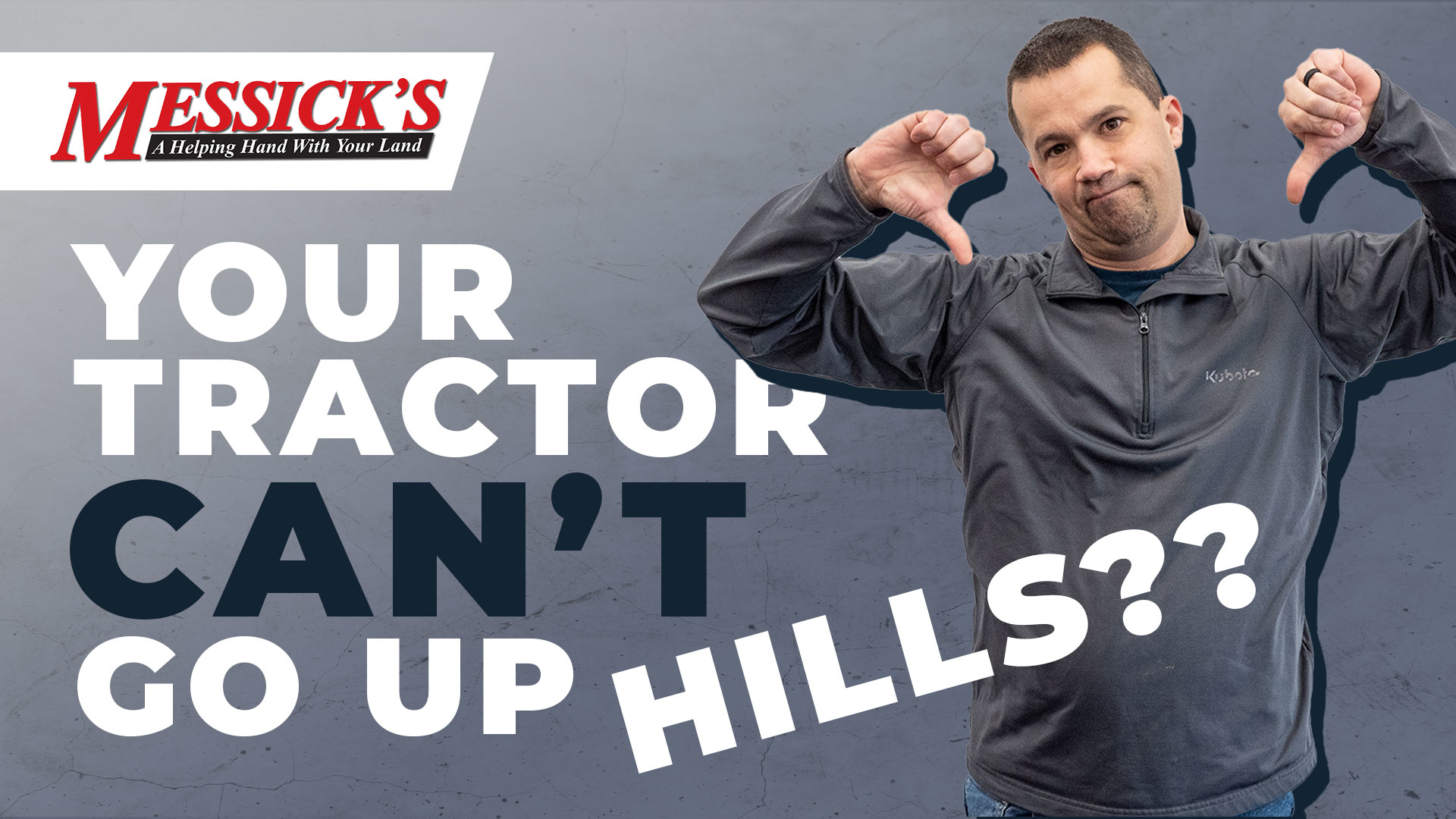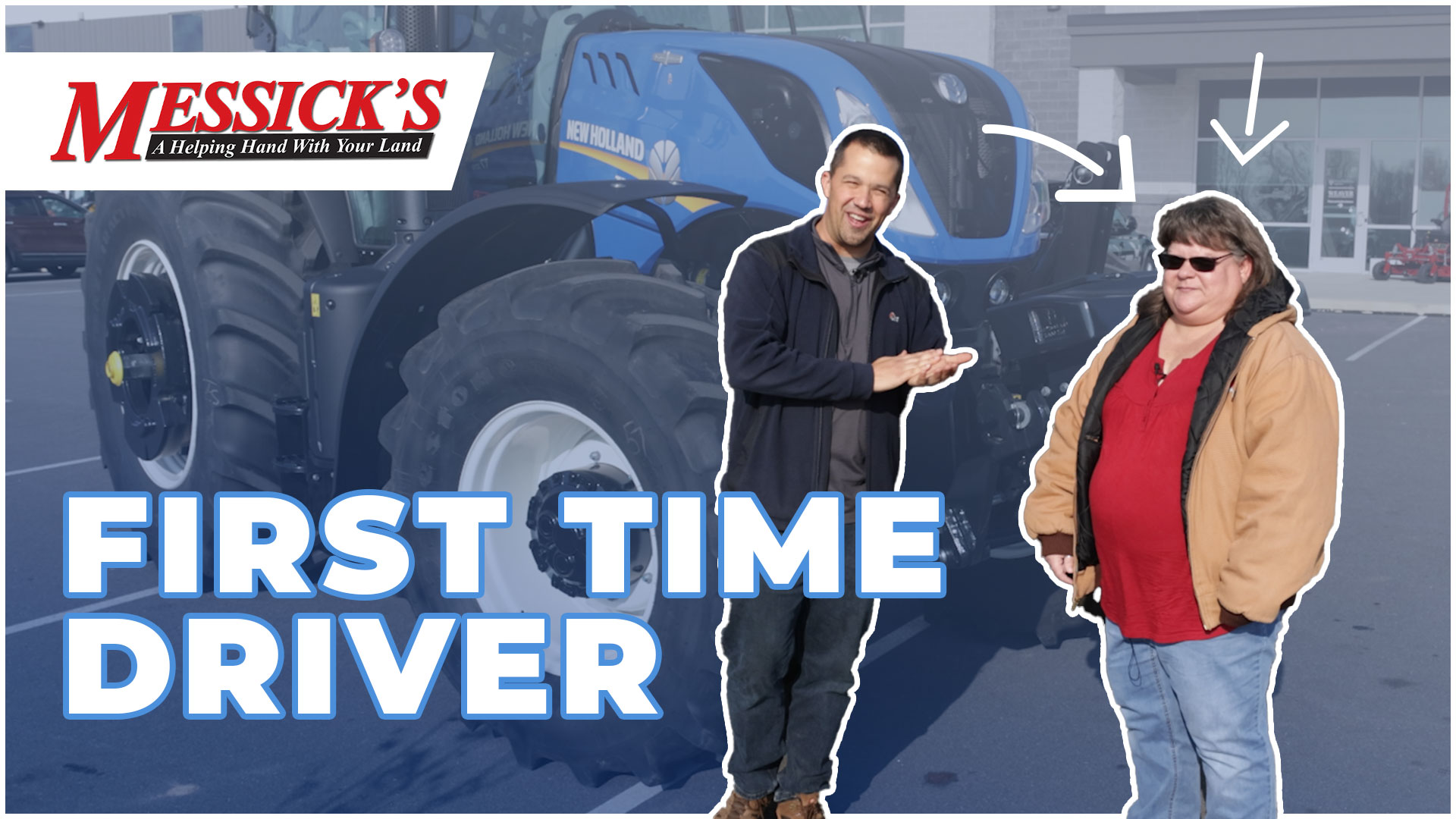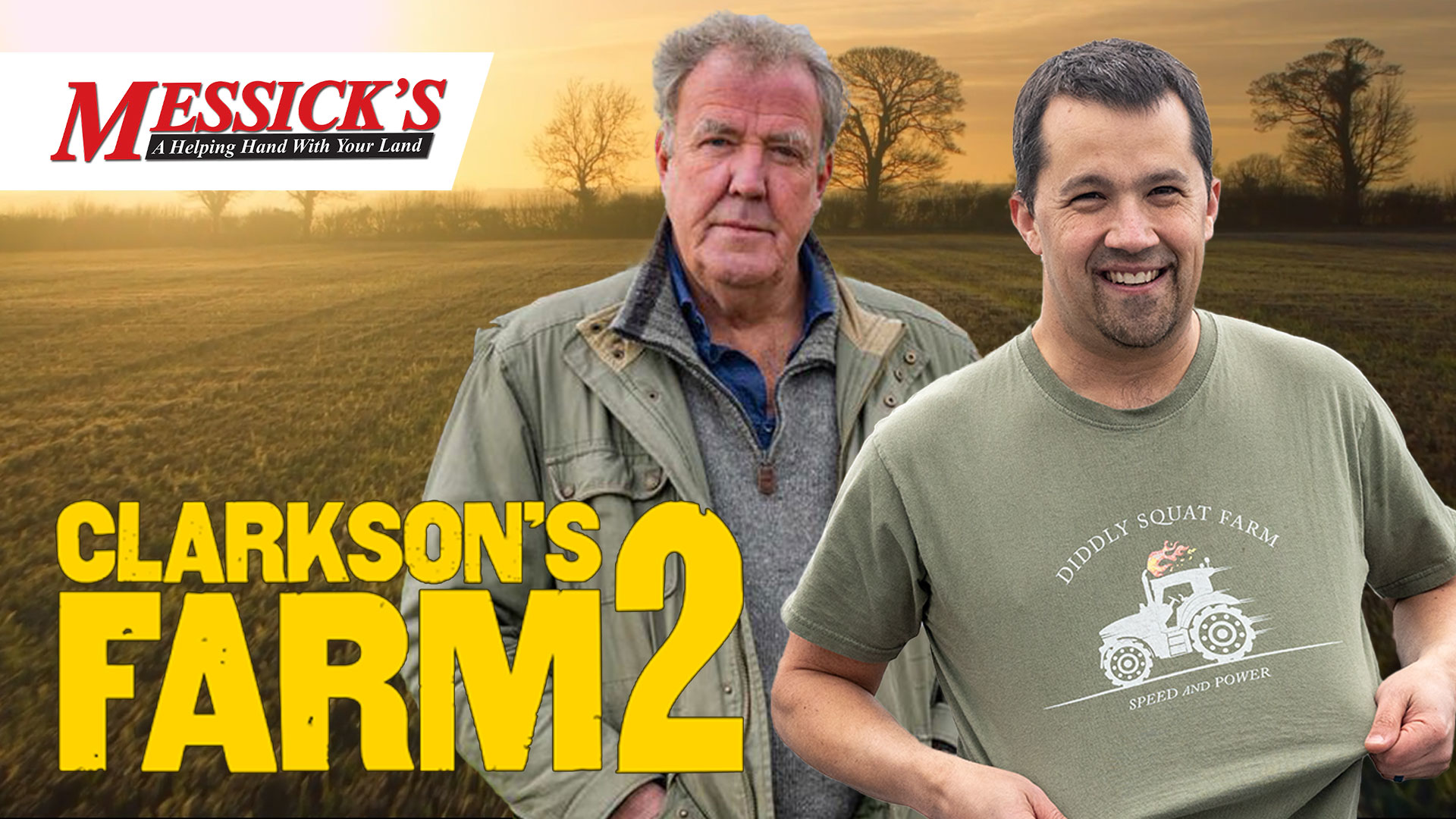Front axle capacity vs loader strength
Tags : educational | kubota |Neil from Messick`s here this morning, had a conversation with you about a trend that I see happening out there in the industry one that I think might be a little embarrassing to some of these companies, even a little embarrassing to myself as an equipment dealer. One thing that you hear from people periodically is the saying they don't make it like they used to and as a salesman, it annoys me a little bit because there's some nuggets of truth to it but it also overlooks the decades of improvements that have been made to things over the years.
We come back and say there's some nuggets of truth to that and one of the places that I think there is some nuggets of truth to it is, in the perspective of this equipment its longevity and how long things are going to last. You look back and you can still see the old four-day ends and the old farm mills and all those tractors that are out there today still able to run and work, they're not the most productive things, they don't make sense for most people's applications anymore, but you can still turn the key and put the thing to work.
I'm starting to look at some of the equipment out there today and wonder if that perspective is changing a little bit. We're becoming a disposable society and the longevity that we see out of this equipment just may not be there in the same way that those tractors were from years ago. There's one very specific place that we're going to look at this today and that's in terms of these two tractors right here and their front axles.
Why these two tractors? I'm sitting here with a John Deere and a Kubota sub-compact, and full disclosure I am a Kubota and New Holland dealer, I do not sell John Deere tractors. I'm not here to throw stones this morning, that's not the purpose of this video. We're talking about this industry trend here. Now, the reason for picking these two models is to give credit where credit's due, John Deere is one of the only ones that actually publishes a public front axle specification.
Kubota has them available, they're not in the brochures and you won't find them on the internet, but we're able to find them in the bid specification sheets that are used when bidding equipment out. I know the front axle specifications for these two tractors, that's why we're covering these two machines today. What is really going to be of more interest to me though if you start growing beyond these two is the companies that don't publish this number and I think when we start doing the research here you're going to start to understand why. What we're going to show you here this morning is the difference between the rated capacity of the front axle of these tractors and the load that's actually put on top of them by their loader.
There is an ever-increasing pressure happening in this business to have more and more and more loader capacity. We all know it's a specification that many of you pay attention to when you're shopping for a tractor and so these companies are pushing this loader capacity number to greater and greater and greater heights, sometimes exceeding the capacity of their front axle. What I have here is a set of race car scales. We're going to slide these scales underneath the tractor's tires, check how much weight we have sitting on top of that front axle, and then begin adding weights to the bucket to check and see when we're at load capacity, how much strain we're placing on the front axle.
Deere shares with us in their specification sheet that the front axle capacity of this tractor is 1,350 pounds, by pulling the tractor up here onto our scales and looking at our numbers right here, we can see that we've got right about 1,400 pounds sitting on top of the front axle with the tractor sitting here with the loader empty. Essentially, this machine is within the margin of error here more than likely at its front axle capacity with no load in the bucket. Now, if you take the conservative measurement for this loader it has a capacity of 550 pounds, 500 millimeters forward to the pivot pin of the bucket to full height. We're going to go and grab 1,150-pound weights, stack them into the front bucket, and check and see how much weight we have sitting on top of that front axle.
Now by going and putting that 550 pounds into the front axle we now have 2,235 pounds sitting on top of the front axle. There's a couple of things here to discuss, we're going to stop with the measurements at this point for a specific reason. We're trying to point out the point and the trend here and not necessarily throw a lot of scary numbers. This is the most conservative load that you could possibly use here. This is the 500 millimeter forward to full height number, but this tractor is going to lift a lot more weight than this. We could probably nearly double the amount of weights that we have down here in the bucket and push it further and further and further and get some really scary numbers.
Probably very comfortably doubling or more the rated capacity of that front axle. Don't focus on the numbers here, this isn't the best science that's ever been done, but the bottom line here, the point that I'm trying to get across is that it's become commonplace now to exceed your front axle capacities. You're going to repeat our test here with one of my own tractors. This is a Kubota BX23S, this is going to come through with a specification from the bid spec sheet of 1,630 pounds for that front axle. Now, when we've pulled it up here on top of our scales with the thing empty, we're coming from a starting place of 1,320 pounds empty so we've got about 300 pounds of headroom there before we start to go over the capacity of that front axle, but once we start stacking this thing full I think you're going to find that we do.
The loader capacity of this tractor is about 10% less than the Deere for a pin-on-bucket version so we're going to come through a 509 pounds of capacity with a pin on bucket, most of these though are sold with a skid steer quick coupler to be able to have that quick change for pallet forks and other things. The weight of that coupler drops the capacity of that down about 80 pounds to 423 pounds which is what this configuration is. We're going to take our 50-pound weights over here and stack nine of them into this front bucket to check and see what our front axle capacity is at load. If our nine weights stacked into that front bucket our number on our front axle comes in at 2,050 pounds.
I don't mean to be alarmist here today these are two companies that have great reputations for making fantastically reliable equipment. We do know though from experience that front axle repairs on small tractors are some of the most common repairs that are made. Now, I've got a pretty good faith in Kubota. We sell tons of their parts and there is not unreasonable amounts of parts going out for these front axles and I know from looking up stuff on Deere online you'll readily find aftermarket axles and stuff available for these but you don't hear horror stories from owners about them failing.
I do worry about two different things here. I worry about the companies coming into this business that don't have reputations that they may not be so concerned about. They need to find ways to stand out and are continuing to push some of these front axle capacities higher and higher and higher. They're not necessarily publishing the numbers down here of what these axles are capable of holding, but if you look at the loader lift capacity numbers they're pushing to places that partly could be considered unsafe for you as an operator. I know for me on my tractor when I have a full load in that bucket sometimes I'm driving around on the front axle and you look at some of the numbers that are put out there to some of these tractors today and question if they're a little unsafe.
I also worry about the conversation of generational tractors. I traded this John Deere in, I gave the owner a great value for it. I'm going to sell it again for a really good price and somebody's going to be happy with this piece of equipment for several more decades, but if these companies were to follow the industry trend and continue to push these loader capacities higher and higher and higher, and not be able to keep up with the front axle which we'll talk about here shortly, what does that do to the longevity of the tractor to its resale value for your ability to be able to pass it on to your friends, families, neighbors to get that resale value out of it again?
I worry a little bit that parts of this industry are headed to a place that these tractors become disposable. That they're not able to the stand up to the decades of abuse that you're going to put on a machine like this. Now, before half of you rush down to the comments and type in down there to be, "Why don't they just make the front axle heavier?" There may probably be a little bit of room for that. I freely admit that they probably could balk up some of these places in order to maybe handle a little bit heavier loader. However, having talked to tractor manufacturers before you're going to know that every one of these decisions is a series of compromises.
You change one part and there's implications for everything else. If you were to go through or maybe put a little bit heavier front axle under that tractor, what's the implications now for your tires? Are they heavy enough in order to handle that additional load? That tire has to be a little bit bigger now does that increase the rear end as well? Does that start to move up? How does it impact the rest of the models in your product line and the way that they overlap? What geometry changes happen now? Now that this axle has changed does it maybe not turn at the same radius that it did before or is the loader geometry going to shift because the tires are coming up?
There's a long list of things that can happen simply by thinking, "Hey, they should just swap that one part out." It's never quite that easy. There's a reason why these things are designed the way that they are. I've got nothing here to sell you today. I'm not here throwing the John Deere under the bus or maybe raising concerns about the tractor that I sell, I'm here to have a conversation. A lot of you who are tractor enthusiasts, pay attention to these videos and watch what's on this channel and I'd like to hear from you a little bit, I'd like you to be aware of some of the things that we're seeing here is about where these machines are headed?
If you got a minute throw some notes down there in the comments and let me know what are your expectations when you buy a tractor today. I like to be able to sell things that I can sell to somebody is that generational investment. These are expensive machines that cost a lot of money and I have a lot of faith in being able to sell a machine that I know somebody's able to get that investment out of over the long- haul or are you looking for something just to get a couple of chores done? Would you happily accept a machine that may only last 15 years? Maybe only 10 years, maybe only just beyond the warranty period, even. In order to have maybe something that's a little less expensive, maybe build a little bit cheaper in the front axles, maybe with a really high loader capacity. Because I think some of those tractors are already out there today.
Throw a couple of things down there in the comments. Let's start this conversation and maybe we can start to change a little bit the perspective that some of these companies take towards this. Specifically, publishing front axle capacities openly. If you're shopping for a piece of equipment and we can help or if you have purchased service needs for a machine you've already got give us a call at Messicks we're available at 800-222-3373 or online at messicks.com.
More Articles

It is exciting to imagine what can be accomplished with your tractor, but why does it struggle when you need it to climb a hill?

Big tractors can be intimidating, but some models are surprisingly easy to drive. We invite Shelby, one of our receptionists, to see how she does behind the wheel of a New Holland T7.270 with Auto Command (CVT Transmission).

Who is Jeremy Clarkson, why is he farming, and what impact does this have on the global agriculture industry?










